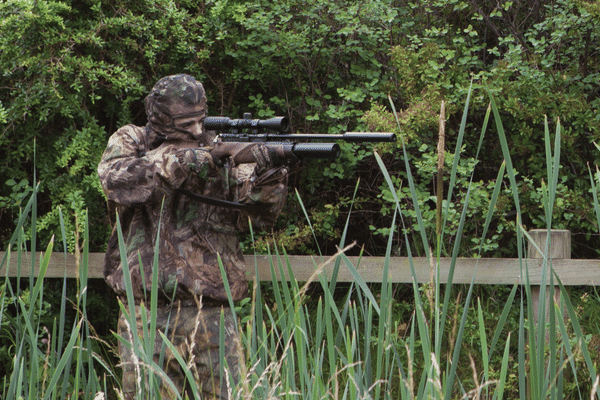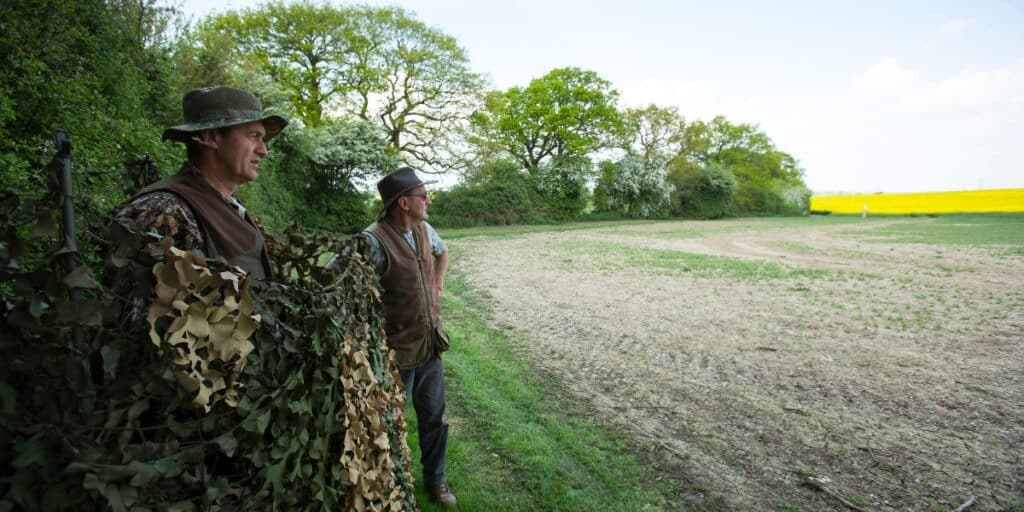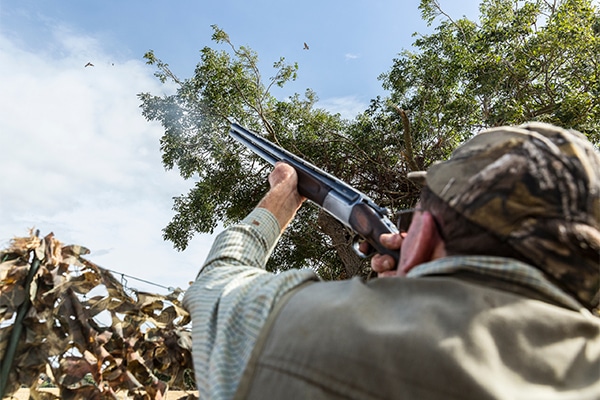
Time to try something new?
Autumn might mark the start of the game shooting season for many, but we’re fortunate to have a variety of shooting types on offer to us in the UK.
Get information on the legal shooting season for mammals and birds in the UK.
Apply for funding for your project or make a donation today
Comprehensive information and advice from our specialist firearms team.
Everything you need to know about shotgun, rifle and airgun ammunition.
Find our up-to-date information, advice and links to government resources.
Everything you need to know on firearms law and licensing.
All the latest news and advice on general licences and how they affect you.


Tackling woodpigeons as they descend on their favoured roosting spots is one of the most exhilarating forms of shooting. Will Garfit shares some useful advice for those who might find themselves staring skyward in a woodland this winter.
On a winter’s afternoon, to shoot woodpigeons as they flight back to the woods in which they roost at night, can be the most sporting form of pigeon control. For anyone who enjoys shotgun shooting it is a must to experience that last hour or two of daylight, on a wild and windy evening, when the flocks of birds silently appear over the treetops. You watch carefully and select a bird as it flies over the gap in the trees above you. Then what appears to be a straightforward driven shot can become just a blur if it sees your upturned face. In an instant it will fade away on the wind, offering just a fiendishly difficult shot. It can be testing shooting; moments of exhilaration are followed by others of frustration and despair. Either way, this wild bird deserves the greatest respect.
So let us look at roost shooting in greater detail. Larger bags can be achieved when shooting pigeons over decoys. This can be great in its own right but totally different to the emotion and exciting experience of roost shooting in the confinement of trees in a wood. Unlike decoying, when a carload of kit is needed, for roost shooting you can set out simply with a gun, cartridges and your dog.
The first problem, of course, is getting permission to shoot. It is often a perk for the beaters who have helped the keeper throughout the season on shoot days. They have earned the privilege of the roost shooting but maybe, if you offer to help beating, you too could enjoy the end-of-season roost shoots. On farms or estates with no game shooting, you might ask the relevant person for permission to shoot in a wood on their land. After all, the farmer is keen for pigeons to be shot, as they are a serious avian pest, eating his crops.
The first thing to assess as we walk into a wood of mixed tree species is the wind, its strength and direction. Pigeons will normally approach a wood upwind, so we will head for the downwind end of the wood and look under the trees to note where there are the most pigeon droppings. This will give us a clue as to the favoured area for the incoming birds.
Then we must select a convenient spot to stand, with a window in the tree canopy above, through which a clear shot can be taken as pigeons fly overhead. When shooting in trees, the secret is to focus on the bird and disregard the twigs and branches. The downside of standing with a clear window above you is that, as you can see the bird, it can easily see you, too. Your face and hands will be very visible to pigeons, which are so alert to danger.
A face mask and gloves can be helpful, but it is movement that a pigeon will spot immediately.
Key to success is that, as you see birds approaching, you slowly move your feet and body to address the anticipated position to make the shot. At the same time, half-mount your gun. Then freeze, absolutely still, until the bird is in range overhead and only then complete the mount and, in one smooth movement, take the shot as the gun swings ahead of the bird. The bird should be dead without ever seeing you or twigging any movement. Once a bird has seen you it will disappear like quicksilver on the wind and the chance of a successful shot has been lost, leaving only a virtually impossible second shot. For this reason, right-and-lefts are difficult to achieve when roost shooting.
Roost shooting is also good training for your dog, who will be very useful retrieving shot birds. Your dog should be positioned partially hidden but able to mark dead birds down. It is a good plan to retrieve birds as they are shot, as it may be nearly dark by the end of the flight.
The weather is an important factor, with the best conditions being overcast with a moderate to strong breeze. If there is little or no wind, the pigeons will arrive high out of range and then just dive down anywhere they choose in the wood, offering few opportunities. Ideally, you want to be able to choose your evening depending on the wind; however, traditionally many roost shoots take place on Saturday afternoons in February and March after the game season. Sod’s Law is that these evenings will be bright, brassy, and still, which only helps the pigeons and the cartridge manufacturers.
Talking of cartridges, there is no topic of conversation that commands more time when chatting later in the pub. Whatever load, shot size or specification, there is only one successful cartridge for anyone and that is the one that is fired accurately. Whatever cartridge is used, it is pilot error that produces a miss. There are few pigeons that will not succumb to a 30g game load of any make of modern cartridge – if put in the right place.
Now we are ready, let us focus ahead on the sky downwind as we wait for the first birds to arrive. The breeze is rattling the twigs and branches overhead and distant trees behind us creak, stretch and groan in the wind. A certain spookiness can hone your senses as you wait like a coiled spring, ready for a shot. As with any pursuit, anticipation is a great part of the day.
Suddenly a group of three can be seen coming in our direction. No, they pass by too far to our left. Now a single pigeon and it is on track for your position. Remembering to keep absolutely still with gun half mounted, now up, mount, bang. Yes! A lovely shot and the grey bird tumbles through the branches, leaving a trail of silver feathers drifting away on the wind as it crashes satisfyingly on the dead leaves behind you. Your dog springs to your command and the bird is soon to hand. On inspection, the pigeon’s crop is bursting with winter rape. That bird will not decimate any more of the farmer’s crop.
The next birds come in a small flock. With so many alert, sharp eyes, they see you and split on the wind. You took a shot but knew the bird was missed as it was gone before the shot was out of the barrel. These pigeons in a wind are very teasing and testing but, if you can get the timing right, a successful shot is so satisfying. It is what shooting should be all about. There is no shame in a miss but oh, what exciting fun!
The flight lasts for another half hour, with sport continuing to be testing and thrilling. There are 15 plump birds, later to be plucked and prepared for the table as you relive the wonders of the day. The first cock pheasants can be heard going up to roost. We pick up your empty cartridges but do not linger to count them. Each one has a story. We then tiptoe out of the darkened fairy tale wood leaving it silent. Except for the faint, distant hunting call of a tawny owl.


Autumn might mark the start of the game shooting season for many, but we’re fortunate to have a variety of shooting types on offer to us in the UK.

Successful pigeon control is an endless learning curve, as BASC East director Terry Behan knows from 40 years of hard-earned experience.

A long-time pigeon shooter shares some useful tips and advice to help you improve your success when decoying woodpigeons.